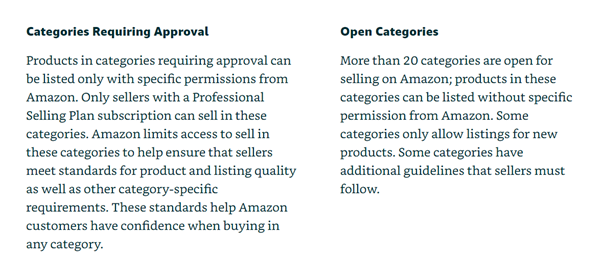Today, Amazon has become one of the popular marketing channels among online retailers. It is advancing businesses in all aspects, including content, product listing, marketing and generating sales. AdAge reveals that advertisers have invested over $10 billion on Amazon in 2018. The platform has become essential for marketers because of its dominance in the e-commerce market.
You might think that consumers begin their online shopping sessions with Google. But according to a poll conducted by NPR and Marist, Amazon is practically the most common starting point for online shoppers. If you are engaged in the e-commerce industry, selling on Amazon could be the best bet to increase your reach and conversions.
To help with your Amazon account management, we’ve created a useful guide that will teach you how to set up an account, list your products, manage your reviews and evaluate your performance. Keep reading to learn how to sell on Amazon in 2020.

1. Choose Between Professional and Individual Seller Plan
When selecting an Amazon Selling plan, keep the products in mind you want to list. As per the Amazon product categories, you can list more than 20 categories. Another 10 categories are only available for professional sellers who apply for permissions and meet precise needs.

Here’s the difference between Individual and Professional Seller Plan:-
- Individual Plan:It is suitable for sellers who are planning to sell less than 40 items per month. It doesn’t require any monthly subscription fee, but selling fees is $0.99 per item in addition to variable closing fees and referral fees.
- Professional Plan:It is ideal for sellers who are selling more than 40 items per month. The monthly subscription fee is $39.99 including referral fees and variable closing fees (no fees per item).
2. Create Your Amazon Seller Account
For the next stage, you’ll need:
- A credit card that can be charged internationally
- Banking details (including account numbers and routing)
- Tax identification numbers
Go through “Sell on Amazon” and read each part carefully to start your registration procedure.
Here are some tips to set up your Amazon Seller Central account login successfully:-
- Keep your business and personal email address separate.
- If you don’t have a business email setup, consider making one through Gmail before log in to Seller Central.
- Keep in mind that every Seller Central account you access will need a unique email.
List Your Products
Once you set up your Seller account, it’s time to list your products for sale in the marketplace. Individual sellers can list their products one at a time whereas professional sellers can list products in large batches. For instance, types of products like clothing require variations of colors or size under a single listing.
Manage Your Inventory
When you upload your listings and launch them on Amazon marketplace, you can use the Seller Central website to handle all sections of your selling account. You can search for new orders, update your inventory, track your performance virtues, and so on.
Encourage Reviews
Reviews play a significant role in driving sales. The more reviews you get, the more credibility and loyalty your brand will enjoy from customers. Luckily, Amazon allows sellers to send and follow-up customer emails after they order one of their products and request for reviews.
In 2016, Amazon banned incentivized reviews which are given to brands in exchange of discounted or free products as long as reviewers accepted they received an incentive for their feedback. So don’t even try to incentivize positive feedback and simply drop emails to costumers asking for a product review.
Analyze Your Performance
E-commerce store maintenance becomes a lot easier when you track the overall performance in terms of units sold, sales generated per day, and other metrics. On your Amazon Seller Central account, you will have access to business reports that shows metrics like sales and order by month, brand performance, page views, inventory in stock, and much more.
With the right products, strong marketing strategies and seller support, marketing on Amazon can be possible. Since the competition is growing rapidly, don’t hesitate to take professional Amazon account management services to discover a plethora of opportunities and accomplish your business goals.

